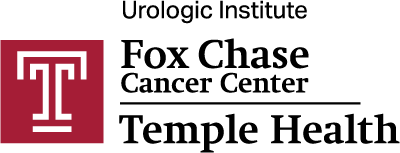

Bronchoscopic Lung Volume Reduction Program
For patients with emphysema and severe hyperinflation whose symptoms cannot be managed using medication or oxygen therapy alone, doctors may resort to surgical resection of the worse regions of emphysema to reduce air trapping and improve patient outcomes. Lung Volume Reduction Surgery (LVRS) surgically removes damaged lung tissue to reduce hyperinflation, and redirects air to healthier lung regions. Although LVRS improves lung function, exercise performance, and quality of life, the need for surgical excision is perceived to have an acceptable risk of complications for many patients who would otherwise benefit from a lung reduction intervention. Temple Lung Center has led several clinical trials that have facilitated FDA approval of the newest lung reduction treatment for severe emphysema—Bronchoscopic Lung Volume Reduction (BLVR) using endobronchial valves. Similar to LVRS in terms of the benefits of treatment, this approach reduces the complications and risks posed by LVRS. Temple was the first U.S. center to commercially perfrom BLVR using endobronchial valves, and is also a national clinical center of excellence for peer instruction in the selection and performance of BLVR.
Advanced Treatment for Emphysema

Bronchoscopic Lung Volume Reduction (BLVR), using endobronchial valves, mimics the mechanism of action of Lung Volume Reduction Surgery (LVRS) by removing damaged lung tissue and allowing healthier regions of the lungs to expand and function more efficiently. This procedure inserts endobronchial valves to target sites in the lung that represent diseased regions. These one-way valves allow unidirectional airflow only during expiration, thus preventing air from flowing into the most diseased area of the lung, but allowing trapped air to be released.
The procedure treats the lung with the most emphysematous disease by using high resolution chest tomography imaging and assessment of regional blood flow. Fissure integrity is assessed qualitatively and quantitatively to predict optimal patient selection. Endobronchial valves are placed using a bronchoscope and a flexible delivery catheter to ensure total lobar occlusion of the targeted lobe. Patients are sedated during the procedure, which typically takes up to an hour to perform, and involves placing several valves to isolate or cut off the diseased part of the lung.
Guidelines for Referral Into BLVR Program at Temple
Inclusion criteria:
- Diagnosed with emphysema
- Able to safely tolerate a bronchoscopic procedure
- BMI < 35 kg/m2 and > 15 kg/m2
- FEV1 < 45% predicted and > 15%
- Residual volume (RV) > 150% predicted
- Total lung capacity (TLC) > 100% predicted
- 6-Minute Walk Distance > 100 m
Exclusion criteria:
- Patient is an active smoker, or has smoked 4 months prior to evaluation
- Patient has a large bullae > 30% volume of either lung
- Patient has previously had lobectomy, Lung volume reduction surgery (LVRS), or lung transplant
- Patient has active asthma
- Patient has uncontrolled pulmonary hypertension
- Patient has been hospitalized for COPD exacerbations more than twice in the past year
Please call 800-TEMPLE-MED to discuss a case or arrange for a patient consultation with the Bronchoscopic Lung Volume Reduction team.
For inpatient transfers, please call 215-707-TRAN (8729).

